Roasting squash is very easy to do and only takes about 5 minutes to prepare before popping them in the oven. I grew up eating pumpkin pie mix and squash purée out of a can so I figured it was hard to do but it is so simple. I highly recommend trying this and now is the perfect time since it is fall.
Acorn squash is very nutritious as well as tasty. This bright green acorn shaped fruit is rich in vitamin C and A, folate, magnesium, Thiamin (B1), B6, pantothenic acid (B5), manganese, and potassium. If you have a race coming up, eat some squash since the B1 is crucial for converting sugar to energy and helps with muscle cramps.
I love adding some cinnamon, lemon zest, Hand Harvested fleur de sel, and maple syrup and to create a delicious purée for my breads or stuffed squash dishes. If I am stuffing the squash, I also add some of my Tuscan Himalayan Pink salt or fresh sage and rosemary to enhance the flavor. Roasting vegetables at home allows you to control how much sugar or salt is in your food. Plus, your breads and meals taste so much better too.
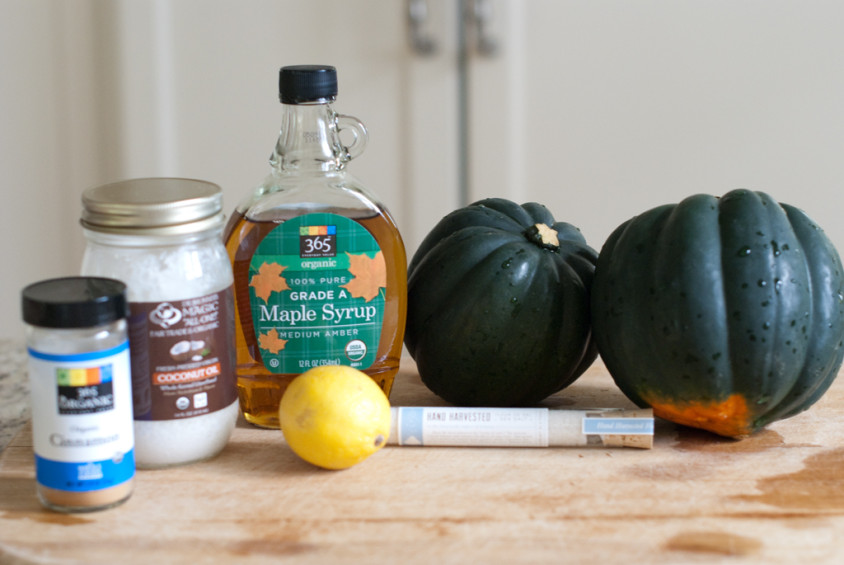
I do not recommend eating the skin. Serving your soups or stuffed dishes in the skin allows for a lovely presentation so do not peel the acorn squash before roasting. It is very difficult to do with all the grooves.
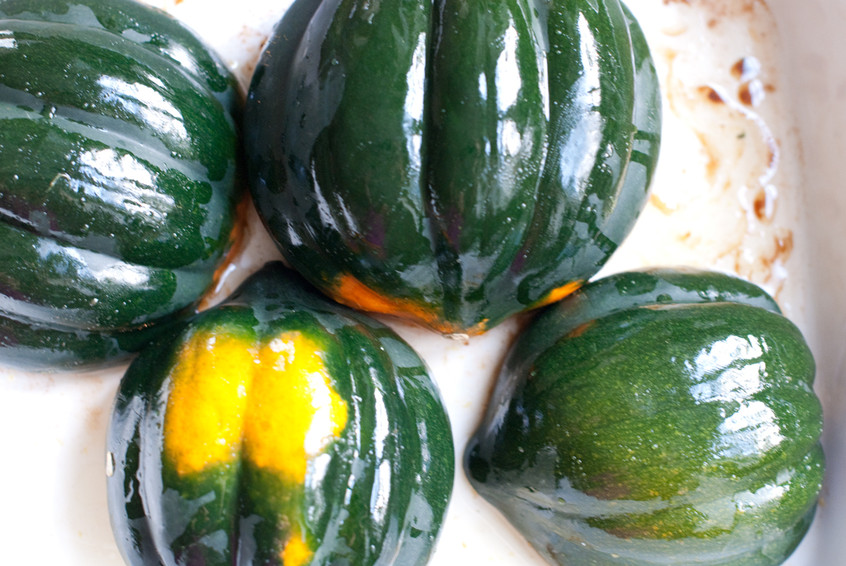
Butternut squash is much easier to peel. You can follow the directions below to roast butternut squash or pumpkin as well.
Directions
1) Wash the squash well with a vegetable cleaner. Select a large, sharp knife to cut the squash in half. You will need to put some muscle behind it since the squash can be tough to cut. Scoop out the seeds with a spoon and set aside. You can roast the seeds too if you wish.
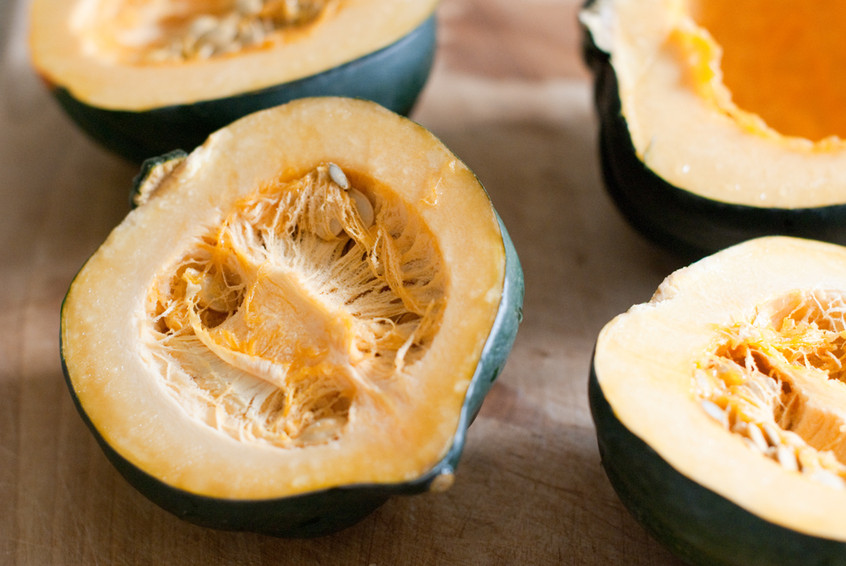
2) Drizzle the inside of squash with coconut or olive oil and add about 1/2 teaspoon of maple syrup to each half. You can use more maple syrup if you love sweet squash. Make sure the skin is oiled too. Add a pinch of Tuscan Himalayan Pink salt or a pinch of sea salt and a pinch of fresh rosemary and sage. Zest half a lemon and sprinkle the zest in the 4 halves.
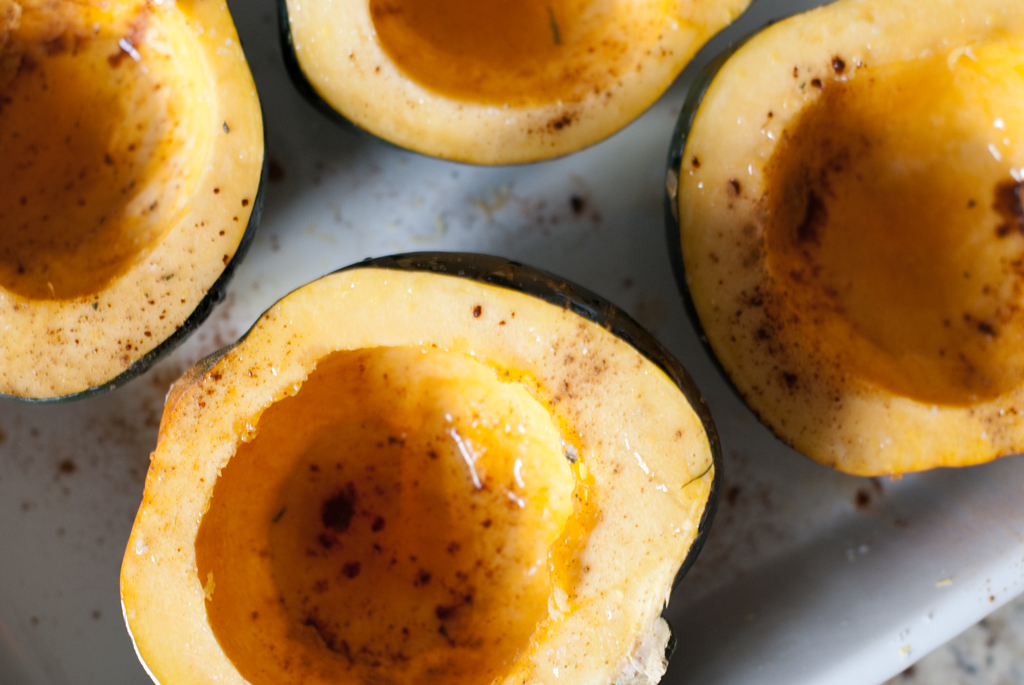
3) Roast for 45 minutes to an hour at 400 degrees. Mine take 45 minutes on convection. A fork can easily go through the flesh when it is done.
Note: If the flesh is browning too quickly, either lower the rack (easier said than done when the oven is hot) or turn the squash over where the skin is exposed. The maple syrup and oil will leak out but it is fine. You can add more maple syrup after they are done cooking. If you do flip them, add some water to the bottom of the pan to prevent the pan from burning and make clean up easier.
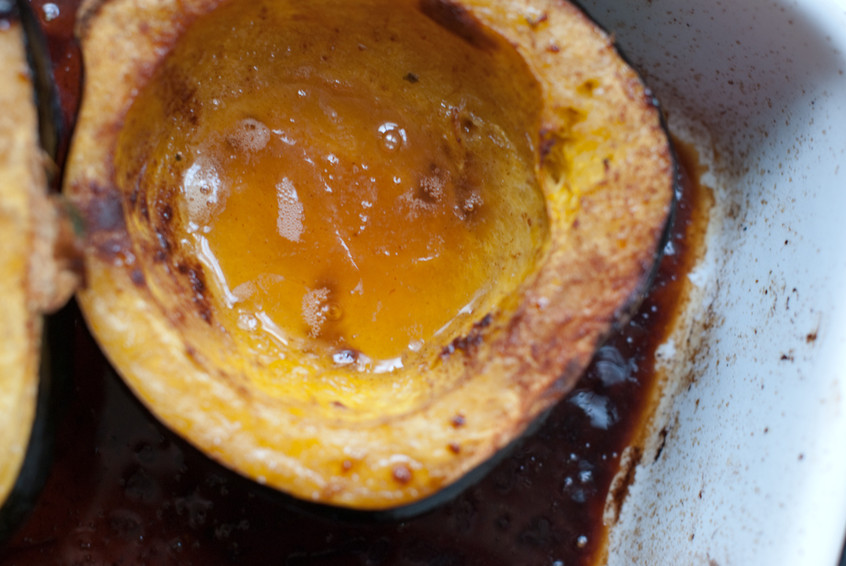
This roasted acorn squash should melt in your mouth. It can easily be mushed into baby food as well. Drizzle some more maple syrup over the top if you like a little more sweetness. Your kids will love the extra maple syrup.
Here are some suggestions on how to use the acorn squash in recipes. These acorn squash muffins with cranberries make a fabulous snack or quick breakfast treat. The acorn squash stuffed with sage sausage and sauted onions and celery is a must try this fall.Enjoy!
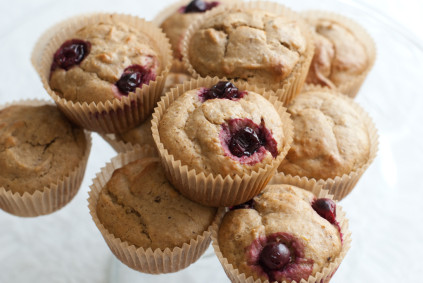
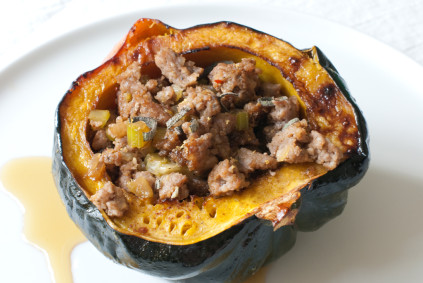
Why you want to Eat this!
ACORN SQUASH VITAMINS AND MINERALS
”A serving of acorn squash contains 37 percent of the DV for vitamin C, 23 percent of the DV for thiamin and 20 percent of the DV for vitamin B6. It also contains 18 percent of the DV for vitamin A, 10 percent of the DV for folate and 10 percent of the DV for pantothenic acid. A serving of acorn squash contains 26 percent of the DV for potassium, 25 percent of the DV for manganese and 22 percent of the DV for magnesium.” Livestrong
VITAMIN B 5
” Pantothenic acid (vitamin B 5) is needed for the breakdown of carbohydrates, proteins, and fats….Claims that pantothenic acid is effective for treatment of nerve damage, breathing problems, itching and other skin problems, and poisoning with some other drugs; for getting rid of or preventing gray hair; for preventing arthritis, allergies, and birth defects; or for improving mental ability have not been proven.” Mayo Clinic
CINNAMON
- Cinnamon is an excellent source of manganese and fiber. It also has potassium, calcium, iron, zinc and magnesium. Cinnamon may help the body regulate blood sugar levels and can be beneficial in high carb foods liked baked breads. The spice helps the body respond to insulin so it may be helpful for individuals with type 2 diabetes.
- Cinnamon may be good for individuals with platelet issues or at risk for stroke or heart attacks since Cinnamaldehyde prevents platelets from clogging in the blood vessels.
- The smell is invigorating and may help adults and children focus and improve brain activity. “Research led by Dr. P. Zoladz and presented April 24, 2004, at the annual meeting of the Association for Chemoreception Sciences, in Sarasota, FL, found that chewing cinnamon flavored gum or just smelling cinnamon enhanced study participants’ cognitive processing. Specifically, cinnamon improved participants’ scores on tasks related to attentional processes, virtual recognition memory, working memory, and visual-motor speed while working on a computer-based program.” read more
